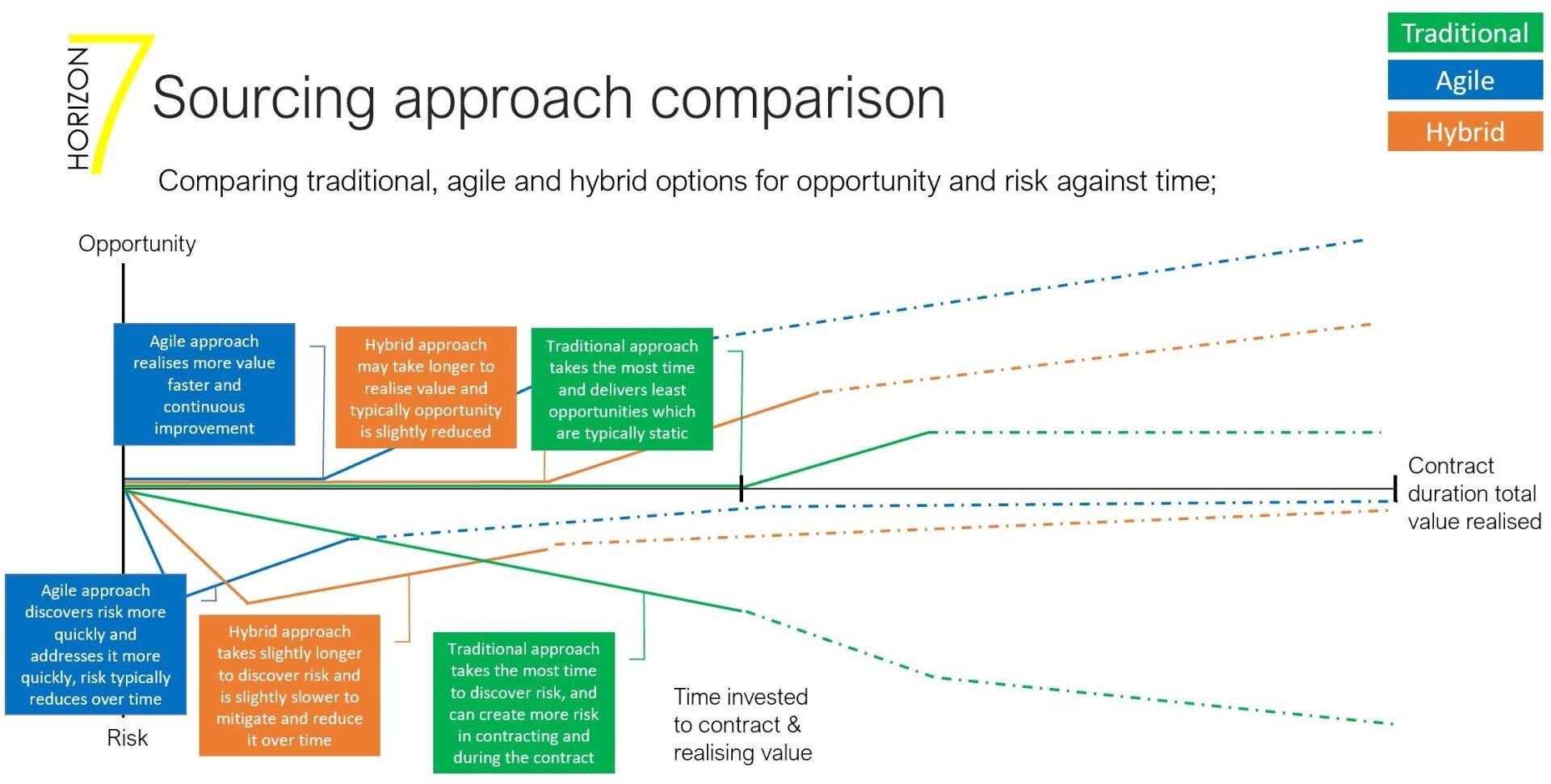RIP RFP - Why moving to Agile IT Sourcing adds more value, rapidly
IT outsourcing contracts nearly always fail to meet expectations, it’s a fact! I've made it my business to find out why. One conclusion is that the methods we use to procure our IT outsourcing deals are outdated. In this article I'll show how the Agile Sourcing approach is:
1. Advantageous over traditional Sourcing
2. Increases opportunity & Reducing risk.
3. Great for suppliers
Traditional RFPs coupled with back-ended, arm’s length legal exchanges fail to deliver high value quickly. This is already being exacerbated as businesses IT outsourcing increasingly moves towards SaaS, PaaS, cloud, and automation technologies. The main challenges I have with traditional processes are.
- Pace - They take too long to deliver value into the business
- Lack of collaboration - They are run at arm’s length and afford little opportunity for the supplier and buyer to collaborate on the solution.
- Process heavy and restrictive - Their format dictates lengthy and similar responses with little opportunity for creativity.
My research shows that the impact of these challenges is a long, expensive (for buyer and supplier) and low value process, that results in a contract that provides for a gap in expectations, and a poor starting relationship.
Agile Sourcing delivers high value outcomes, quickly.
Having researched the problem for over a decade, I have designed and iterated an Agile Sourcing approach to respond to these challenges and had the pleasure of running the approach many times for our clients at Horizon Seven.
Agile sourcing addresses the issues with traditional sourcing methods in 6 ways;
- Starts by defining the buyer’s outcomes, in real terms from the sourcing project
- Defines a clear, outcome-based business case before going to market
- Brings the shortlisting to the front of the process to focus on few suppliers.
- Face to face collaborative design of solutions in agile workshop sprints -client and supplier understand each other’s ways of working prior to selection
- Parallel run contract negotiations enable evaluation and best contract for the solution as well as rapid execution
- Typically taking 4 months from conception to contract signature, for even the most complex deals – compared to a typical cycle which takes 12-18 months
Ultimately, Agile sourcing delivers greater outcomes, and reduces risk
Compared with traditional, and even hybrid approaches, Agile Sourcing identifies and deals with risk rapidly and identifies and enables opportunity realisation more quickly.

Agile sourcing is better for suppliers
Typically, the industry has little sympathy for the supplier community and wasted effort expelled through bidding processes. With this approach suppliers benefit from.
- More highly engaged, informed clients leads to a better engagement with the suppliers.
- Suppliers have the freedom to be creative with the client, face to face.
- The whole response is well understood by the client.
- The solution and the contract evaluated and on more than just price.
- Suppliers are engaged and shortlisted quickly; they can have more confidence about a well-run process.
- An efficient process it costs less to bid, with more likelihood of winning.
- A well-defined, concise process it is unlikely to derail or miss its deadlines.




